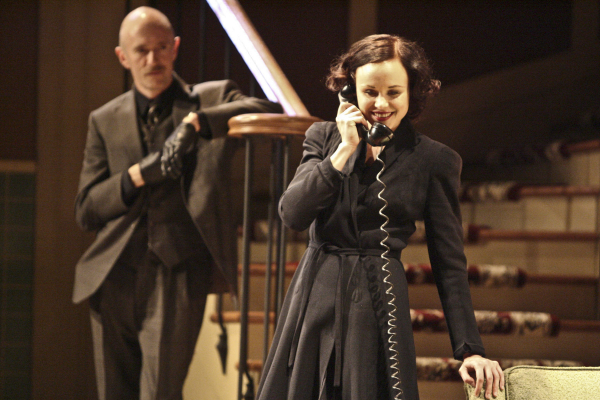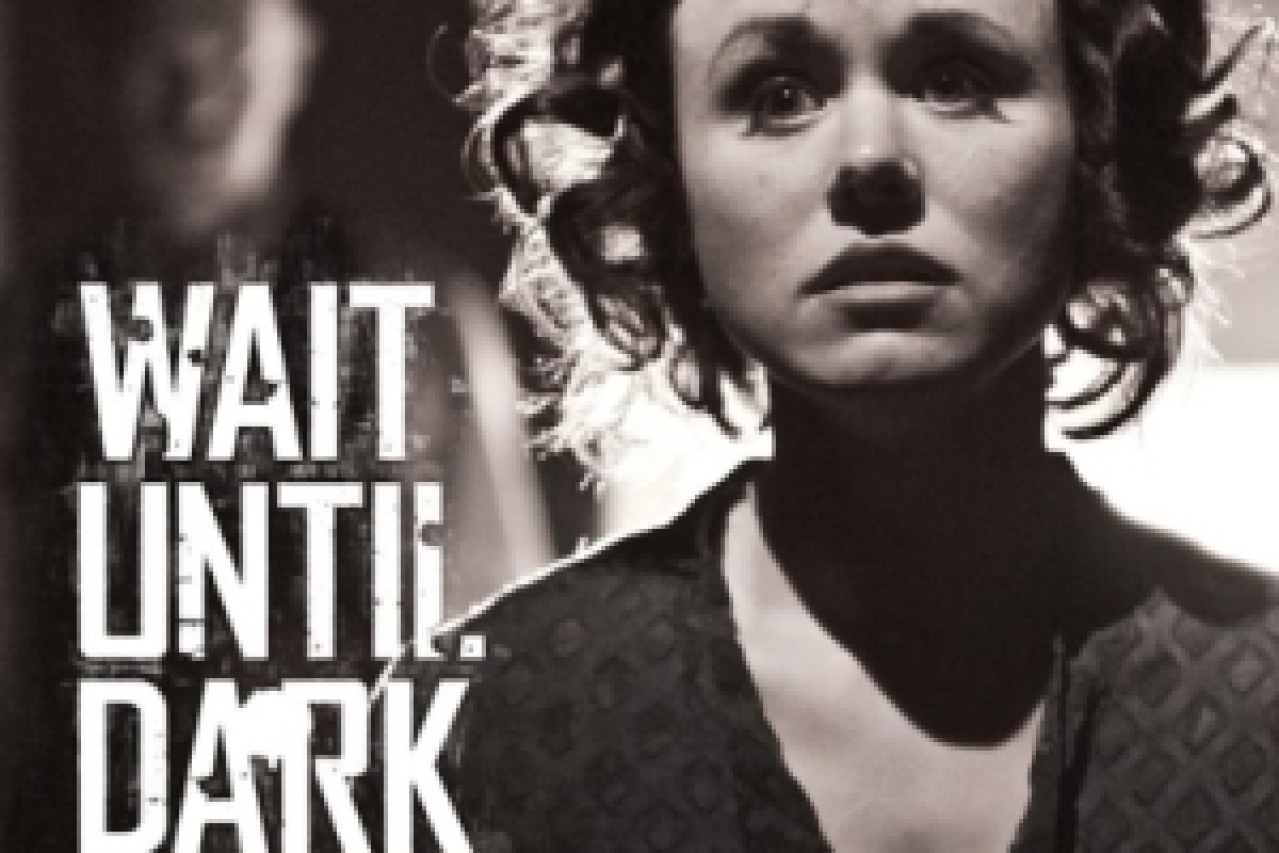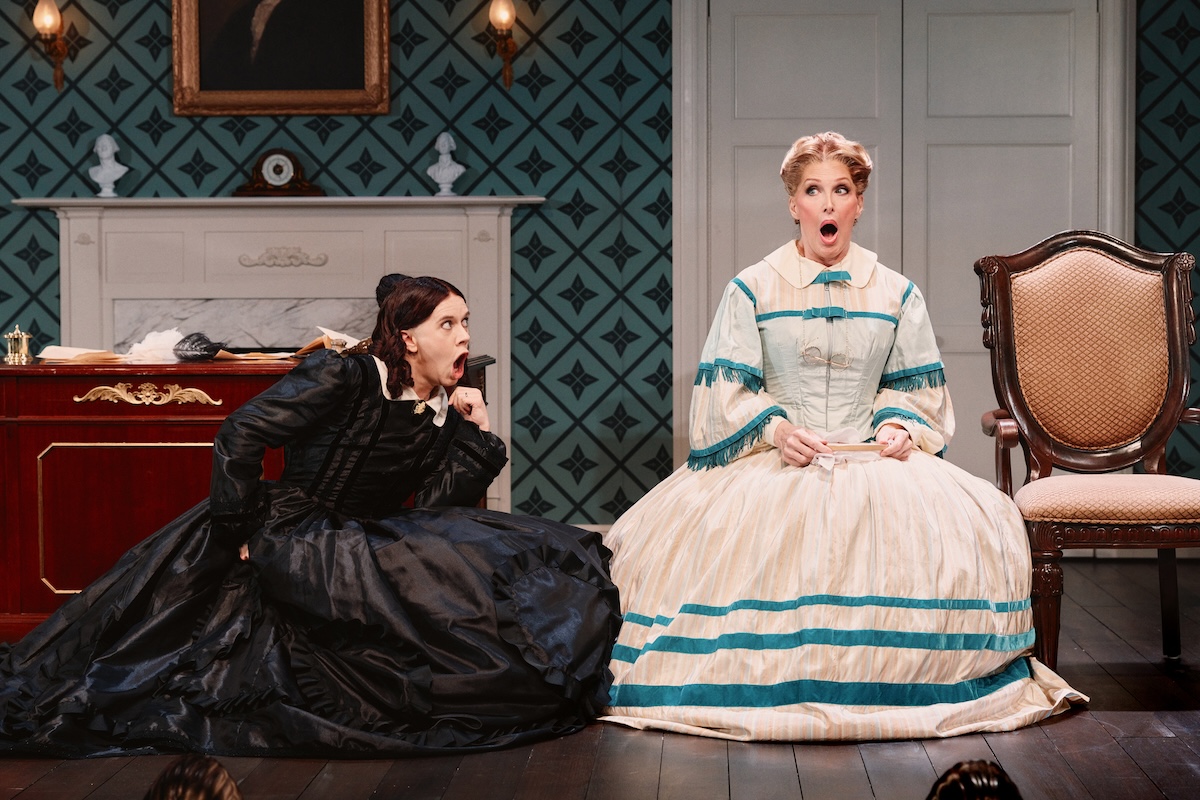Wait Until Dark

(© Michael Lamont)
Playwright Jeffrey Hatcher takes Frederick Knott’s hit play Wait Until Dark and refocuses the text, changing the era and rewriting major scenes. The alterations mostly enhance the scares and add subtext to the protagonists. Most importantly, this production at the Geffen Playhouse has hired a stellar cast including Broadway actress Alison Pill as the blind damsel in distress who refuses to become a victim in a dangerous con game.
Susan (played by Pill) is still recovering from a car accident from over a year ago that left her blind. Though otherwise physically healthy, Susan requires assistance from her husband, Sam (played by Matt McTighe), and her bratty young neighbor, Gloria (played by Bridhid Fleming). Her disorientation and lack of esteem heightens when a con artist and a psychopath harass her for the location of a precious doll. For a while, the men have the upper hand and fool Susan. But Susan knows that if she can wait until dark, the scales will shift and she will be the one in control.
Pill gives her character vulnerability yet an inner strength, making her metamorphosis into a heroine believable. An adept listener, Pill reacts to the smallest sounds, making it explicable that her character has honed her other senses. As her confidant, Mike, Mather Zickel projects a trustworthy and dependable air making Susan’s immediate kinship with him credible. As the psychotic Roat, Adam Stein digs into the character’s menace, mocking our heroine with a haunting tone as piercing as his trusty knife. Fleming is a talented child actress. Funny and sad in her line readings as the young neighbor, she manipulates her body and voice to evoke empathy, including running clumsily with her head protruding out like a flamingo or caustically attacking Susan in fits only to reveal panic in her voice indicating a tantrum that went too far.
Hatcher moves the original play from 1966 (the year it opened on Broadway) to 1944 with World War II in full effect. The new period brings an undertow of peril and mistrust, when people feared Nazi spies and the possibility of attacks on the home front. Also, the role of women in 1944 differed greatly from the era of equal rights and female empowerment. Unlike the original character, this Susan lives at a time when women were still subservient to their husbands. Susan here would require digging even deeper to find the strength to fight off monsters in her house. America would not have given even a sighted woman the confidence to fight adversity. Another major alteration in the new revision includes hiding vital information from the audience, which leaves the audience even more off-balance.
There are a few contrivances: Some are new due to the date change (would a middle-class family in 1944 have an electric fridge?) and some inherent in the play (would someone with heightened hearing not recognize the difference in sound between someone speaking in a large room and one talking in a phone booth in pouring rain?), but these nitpicks do nothing to ruin the play’s crackerjack trappings.
Director Matt Shakman keeps the audience in fear for the heroine. Because of Susan’s blindness, sound becomes a major player. The climax takes place in total darkness, so Shakman requires his actors to paint a picture of what is happening through the proximity and intensity of their voices.
The physical production becomes a vital character in frightening the audience. Elizabeth Harper’s lighting design enhances the shadows, and Craig Siebel’s set becomes a booby trap, first for the endangered Susan and eventually for the men who are less comfortable in the soundings when the worm turns. Shakman utilizes to great effect Jonathan Snipes’ spine-tingling score, which mixes standard horror themes with an unnerving tune that would be found in a music box or doll. One misstep from the props department: A dead body in a bag would be terrifying if only the hair showed, but in seeing an obvious mannequin as the dead body, all sense of danger is dispelled.
Even with extensive rewrites, Wait Until Dark does not always stand up to logic, and yes, one call to the cops on the way to the train station would save a lot of blood, but the thriller is a roller-coaster ride, one that leaves the audience giddy from terror.











